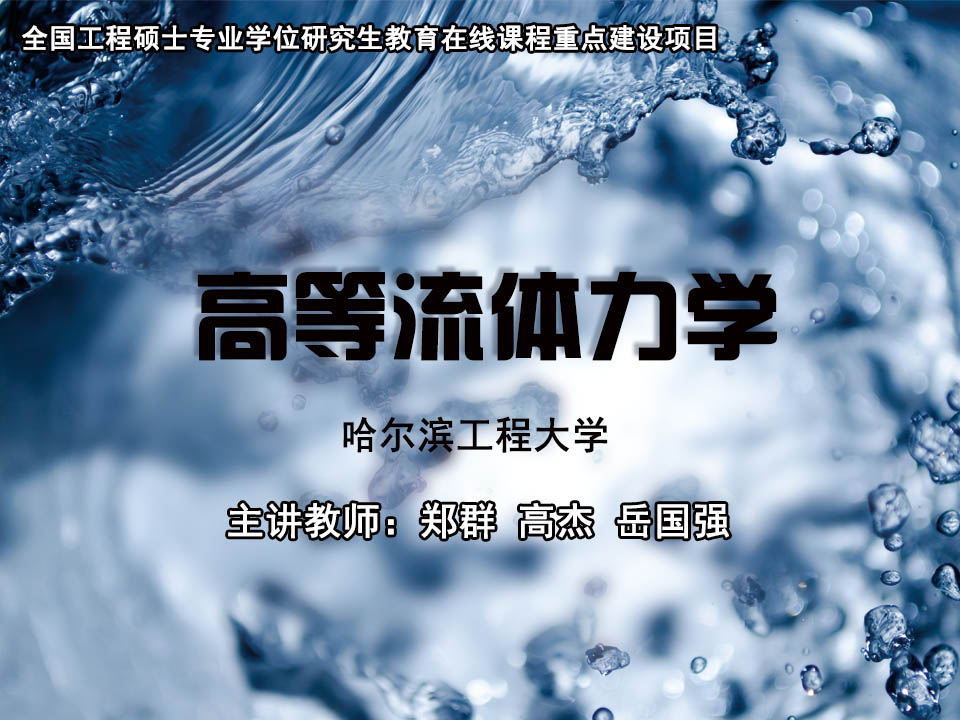
当前课程知识点:国际新闻比较与分析 > 第五章 Foreign Correspondence (驻外报道) > 5.4 Foreign Correspondence in the New Millennium(新世纪的驻外报道) > 5.4 Foreign Correspondence in the New Millennium
大家好
欢迎回到课堂
在上一节课中
我们考察了各种媒体平台
我们可以通过它们获取国际新闻
但是 我想让你们注意到
主要为观众策划或传播国际新闻的媒体
主要为观众策划或传播国际新闻的媒体
和大力生产国际新闻的媒体之间的区别
策划国际新闻
不同于生产国际新闻
没有制作的努力
策划是徒劳的
因为没有什么可以策划的
所以在本讲中
我们将探讨国际新闻的产生
即 新世纪的对外通信
可悲的是 进入新世纪以来
对外通信行业
陷入了严重危机
尽管国际新闻传播渠道
大量增多且变得多样化
国际新闻第一手内容的生产力却在下降
国际新闻第一手内容的生产力却在下降
从事国际新闻报道的人更少了
有意愿或有能力投资
制作原创国际新闻的机构越来越少了
许多国际组织
不断削减国际事务的报道
外国分社被关闭
外国记者也被召回
让我从一个例子开始
例如 在2007年
《波士顿环球报》
经营着著名的聚焦调查报道团队
它已经被拍成了好莱坞电影 《聚焦》
它震惊了新闻界
当它宣布将关闭其最后三个外国分社时
根据其官方声明 其原因是
作为削减成本努力的一部分
这三个分社分别位于耶路撒冷 波哥大和柏林
这标志着本报驻外工作人员三十多年来的报道的终结
这标志着本报驻外工作人员三十多年来的报道的终结
这只是众多例子中的一个
事实上 据帕梅拉·康斯特布尔
一位《华盛顿邮报》长期驻外记者称
在2002年至2006年期间
驻外记者的数量
从188人减少到了141人
更多的例子包括
《巴尔的摩太阳报》
从墨西哥到北京都有记者
现在没有了
《新闻日报》曾经有六个外国分社
已经关闭了它在巴基斯坦的最后一个分社
据《哥伦比亚新闻评论》报道
在1998年至2010年期间
美国20家报纸和报业公司
已经取消了他们的外国分社
在其他地方
这些分社的数量和规模都大幅缩水
此外
根据《美国新闻评论》的一项调查
在美国报社工作的外国记者人数也有所下降
在美国报社工作的外国记者人数也有所下降
从2003年的307人下降到2011年的234人
仅8年时间就下降了24%
由于这些关停
今天只有少数美国报纸
仍然保持着稳定的外国记者
实际上 现在只有三家
《华尔街日报》 《纽约时报》
和《华盛顿邮报》
《华尔街日报》目前在
49个国家设有记者
《纽约时报》目前在
美国境外设有31个分社
《华盛顿邮报》目前在
15个国家有21名外国记者
在广播电视方面情况更糟
在广播电视方面情况更糟
在20世纪80年代 美国通讯网络的巨头
ABC NBC和CBS
各有大约15个外国分社
但到2007年他们只有6个或更少
降幅超过60%
晚间新闻广播中用于海外报道的时间
晚间新闻广播中用于海外报道的时间
2013年不到20世纪80年代末的一半
今天 美国唯一一家
拥有大量外国分社和记者的电视网
是CNN国际台
根据官方数据
它在美国以外有27个分社
加上三个海外生产中心
阿布扎比 香港和伦敦
在世界其他地区
外国通信的情况也令人担忧
例如 在澳大利亚
据前总理马尔科姆·特恩布尔
他说他本人也是一名外国记者
1960年代 《悉尼先驱晨报》和《泰晤士报》
在伦敦有5名记者
在纽约有3名记者
他们有专职记者在巴黎
罗马 新加坡和拉包尔都
加上在约翰内斯堡
东京 多伦多和新德里的共享记者
费尔法克斯在伦敦和纽约设有大型办事处
但如此广泛的海外业务
对于一家报业集团来说是前所未闻的
近年来
《澳大利亚人》已经关闭了
华盛顿 纽约 洛杉矶
伦敦 曼谷和新西兰的办事处
多年来 费尔法克斯已经从
惠灵顿 东京和纽约撤出
《澳大利亚金融评论》不再有任何记者驻在东京
而东京是澳大利亚第二大贸易伙伴
在这方面只有澳大利亚广播公司
是最突出的
它仍然有大量的国际事务
在海外有几十名员工
当然 正如我们在前面的课程中所提到的
全球通讯社仍然在国际上站稳着脚跟
并且一直是世界各地驻外报道未没落的权力机构
并且一直是世界各地驻外报道未没落的权力机构
但是 总体而言
在许多国家和许多媒体组织中
国际新闻报道近几十年的发展在走下坡路
国际新闻报道近几十年的发展走下坡路
有人说国际报道正在消亡
有人说这是转型期
但也有人说这只是重组
以后会有重生
无论我们用什么样的语言和话语
来描述当前的形势
驻外报道将如何发展
在21世纪20年代及以后
是我们需要不断观察的问题
在过去的报道大半个世纪里
驻外报道一直是我们国际新闻的创作者
以及我们国际新闻来源的提供者
它会继续扮演这个重要的角色
还是会在这一代人或下一代人身上扮演不同的角色
我希望你把这个问题记在心里
在以后的学习中经常思考它
这是本节课程的全部内容
再见 下次见
-导论 Test
-1.1 Definition of News (新闻的定义)
--1.1 Test
-1.2 General News Values: Timeliness, Impact, Prominence, Proximity (新闻的及时性、影响力、显著性与接近性)
--1.2 General News Values: Timeliness, Impact, Prominence, Proximity
--1.2 General News Values: Timeliness, Impact, Prominence, Proximity
--1.2 Test
-1.3 General News Values: Conflict, Deviance, Currency, Necessity (新闻的冲突性、异常性、话题性与实用性性)
--1.3 General News Values: Conflict, Deviance, Currency, Necessity
--1.3 General News Values: Conflict, Deviance, Currency, Necessity
--1.3 Test
-1.4 Structure and Value of International News (国际新闻的结构与价值)
--1.4 Structure and Value of International News
--1.4 Structure and Value of International News
--1.4 Test
-2.1 Hierarchy of Influences on News (新闻的影响层级)
--2.1 Hierarchy of Influences on News
--2.1 Hierarchy of Influences on News
--2.1 Test
-2.2 Gatekeeping and Personal Influences (新闻把关人与记者个人影响)
--2.2 Gatekeeping and Personal Influences
--2.2 Gatekeeping and Personal Influences
--2.2 Test
-2.3 Media Routines and Organizational Influences (新闻常规与组织影响)
--2.3 Media Routines and Organizational Influences
--2.3 Media Routines and Organizational Influences
--2.3 Test
-2.4 Extra-Media Forces and Ideology (意识形态与组织外影响)
--2.4 Extra-Media Forces and Ideology
--2.4 Extra-Media Forces and Ideology
--2.4 Test
-3.1 Authoritarian and Libertarian Theories of the Press (媒体的威权主义与自由主义理论)
--3.1 Authoritarian and Libertarian Theories of the Press
--3.1 Authoritarian and Libertarian Theories of the Press
--3.1 Test
-3.2 Social Responsibility and Communist Theories of the Press(社会责任与共产主义理论)
--3.2 Social Responsibility and Communist Theories of the Press
--3.2 Social Responsibility and Communist Theories of the Press
--3.2 Test
-3.3 Comparing Media Systems in the West: Three Models (比较媒介体系的三种模式)
--3.3 Comparing Media Systems in the West: Three Models
--3.3 Comparing Media Systems in the West: Three Models
--3.3 Test
-3.4 Comparing Media Systems in the West: Four Dimensions(比较媒介体系的四个维度)
--3.4 Comparing Media Systems in the West: Four Dimensions
--3.4 Comparing Media Systems in the West: Four Dimensions
--3.4 Test
-4.1 State-Owned Media (国有媒体所有制)
--4.1 Test
-4.2. Public-Owned Media (公共媒体所有制)
--4.2 Test
-4.3. Private-Owned Media (私人媒体所有制)
--4.3 Test
-4.4. Concentration of Media Ownership (媒体所有权集中化)
--4.4 Concentration of Media Ownership
--4.4 Concentration of Media Ownership
--4.4 Test
-5.1 Evolution of Foreign Correspondence(驻外报道的历史与起源)
--5.1 Evolution of Foreign Correspondence
--5.1 Evolution of Foreign Correspondence
--5.1 Test
-5.2 The Role of Global News Agencies (全球通讯社与驻外报道)
--5.2 The Role of Global News Agencies
--5.2 The Role of Global News Agencies
--5.2 Test
-5.3 Foreign Correspondence Beyond News Agencies (通讯社之外的驻外报道)
--5.3 Foreign Correspondence Beyond News Agencies
--5.3 Foreign Correspondence Beyond News Agencies
--5.3 Test
-5.4 Foreign Correspondence in the New Millennium(新世纪的驻外报道)
--5.4 Foreign Correspondence in the New Millennium
--5.4 Foreign Correspondence in the New Millennium
--5.4 Test
-6.1 Foreign Correspondents in China(外媒驻华报道)
--6.1 Foreign Correspondents in China
--6.1 Foreign Correspondents in China
--6.1 Test
-6.2 International Journalism in Chinese Media (中国媒体国际报道)
--6.2 International Journalism in Chinese Media
--6.2 International Journalism in Chinese Media
--6.2 Test
-6.3 Chinese Correspondents in Foreign Bureaus (中国媒体驻外记者)
--6.3 Chinese Correspondents in Foreign Bureaus
--6.3 Chinese Correspondents in Foreign Bureaus
--6.3 Test
-7.1 Definition of Geography of News (新闻地理的定义)
--7.1 Definition of Geography of News
--7.1 Definition of Geography of News
--7.1 Test
-7.2 Geography of Foreign News on Global TV(全球电视国际报道的新闻地理)
--7.2 Geography of Foreign News on Global TV
--7.2 Geography of Foreign News on Global TV
--7.2 Test
-7.3 Who Is Interested in China (外国公众对中国新闻的兴趣)
--7.3 Who Is Interested in China
--7.3 Who Is Interested in China
--7.3 Test
-8.1 Determinants of Global News Flow(全球新闻流的决定因素)
--8.1 Determinants of Global News Flow
--8.1 Determinants of Global News Flow
--8.1 Test
-8.2 World System Theory and Global News Flow(世界系统理论与国际新闻流)
--8.2 World System Theory and Global News Flow
--8.2 World System Theory and Global News Flow
--8.2 Test
-8.3 Towards a New World Information and Communication Order(通往新信息传播秩序之路)
--8.3 Towards a New World Information and Communication Order
--8.3 Towards a New World Information and Communication Order
--8.3 Test




